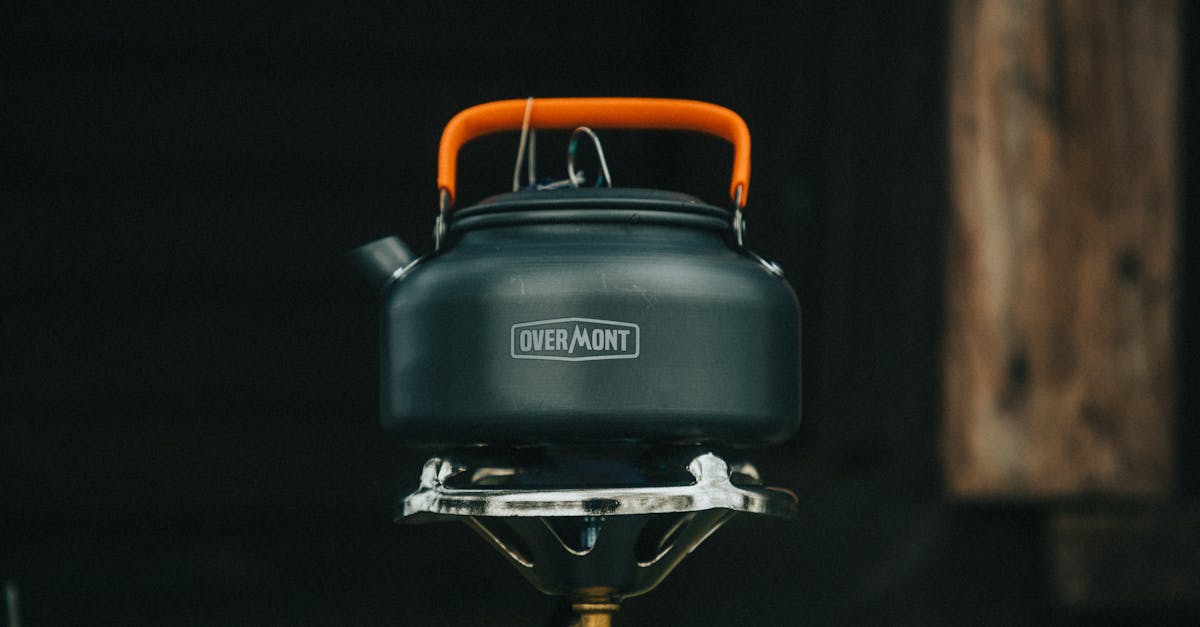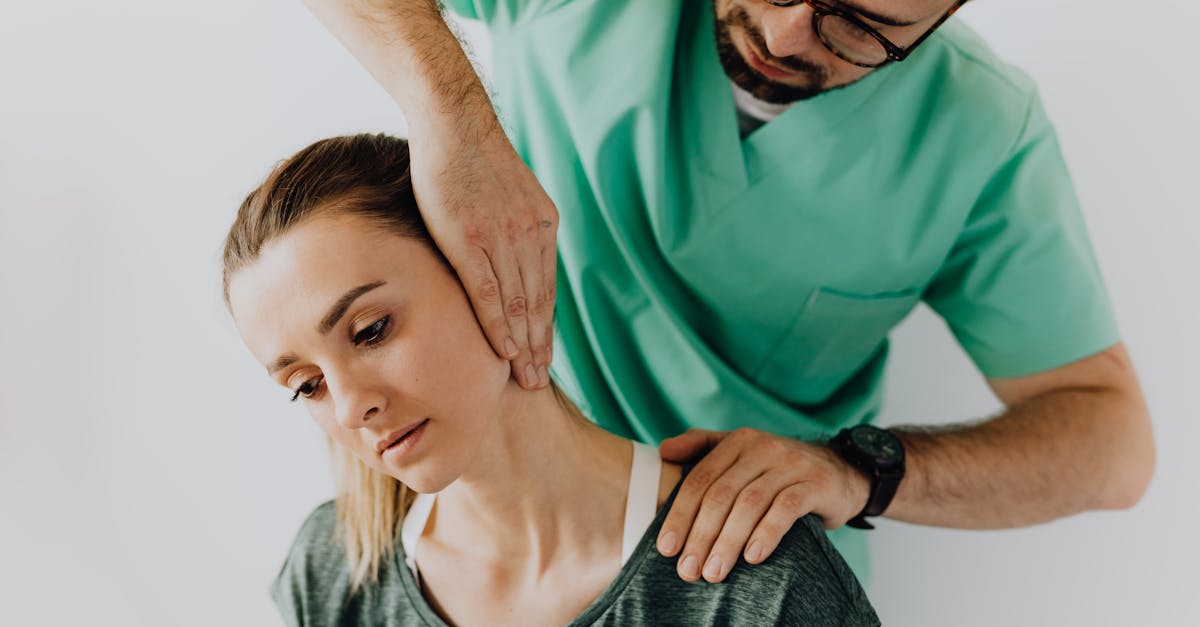|
In Short, unlocking frozen shoulder refers to the comprehensive approach to overcoming adhesive capsulitis, a condition marked by severe joint stiffness and pain. This journey towards regaining joint mobility involves structured physical therapy, targeted exercises, and effective pain management techniques. Key benefits include improved range of motion, reduced discomfort, and enhanced quality of life. This method operates by gradually restoring flexibility through gentle movements that promote healing and functional recovery. |
Unlocking the Frozen Shoulder: A Journey to Regain Joint Flexibility delves into the debilitating condition known as frozen shoulder or adhesive capsulitis, which restricts movement and causes significant discomfort. The article discusses its three main phases: freezing, frozen, and thawing, emphasizing the importance of early intervention and undergo physical therapy that incorporates stretching exercises. It also highlights supportive measures such as ice therapy and the potential use of corticosteroid injections to aid in pain management and mobility restoration. The holistic approach to tackling frozen shoulder is vital for enhancing the overall quality of life for those affected by this condition.

Experience a New Era of Wellness with Pulse Align
At Pulse Align, we understand the importance of achieving your body’s optimal balance and posture. Our innovative and non-invasive approach employs gentle, imperceptible pulses that support your body in restoring its natural alignment and functionality. This method provides a refreshing alternative to conventional wellness solutions, as it focuses on gently engaging the body’s instincts to alleviate tension and create a sense of well-being.
Promoting Natural Recalibration
Our philosophy at Pulse Align is that discomfort should not dictate your quality of life. We do not directly address tension or discomfort; instead, we empower your body to recalibrate itself. Many clients report remarkable improvements in their overall well-being, including enhanced posture and balance after engaging in our gentle sessions. By facilitating this natural process, we allow you to experience increased comfort and functional balance.
Personalized Experiences Tailored to You
At Pulse Align, we take pride in offering a personalized experience catered to your unique needs. Our clients often share positive outcomes, noting improvements in neck and back tension while enjoying a general sense of harmony in their daily activities. Our approach is suitable for the entire family, including children and pregnant women, making Pulse Align a perfect addition to your family’s wellness routine.
Join Us on Your Wellness Journey
We invite you to discover more about Pulse Align’s services by visiting our website. Explore our clinic locations in cities such as La Prairie, Mont-Royal, Terrebonne, and beyond, and book a consultation tailored for you and your loved ones. Remember, our services complement your existing healthcare routines rather than replace them. Experience firsthand how our safe, non-invasive, and family-friendly approach can enhance your overall well-being. To learn more and take the next step, visit Pulse Align today!
Unlocking the Frozen Shoulder: Strategies for Regaining Joint Flexibility
- Understanding Frozen Shoulder: Recognition of symptoms and stages of progression.
- Initial Assessment: Consultation with healthcare professionals for proper diagnosis.
- Physical Therapy: Tailored programs to enhance mobility and reduce stiffness.
- Stretching Techniques: Integrating gentle and specific stretches to improve flexibility.
- Pain Management: Utilizing methods like ice therapy to alleviate discomfort.
- Corticosteroid Injections: Considering injections for severe pain relief.
- Home Exercise Regimens: Continuous practice to support recovery progression.
- Ongoing Assessment: Regular evaluations to adjust treatment plans as necessary.

Frozen shoulder, or adhesive capsulitis, limits shoulder mobility and can significantly affect daily activities. Regaining joint flexibility involves understanding the underlying phases of this condition and engaging in tailored treatment strategies, including physical therapy, stretching exercises, and holistic health practices. This article explores the journey to reclaiming mobility through focused approaches that empower individuals to overcome shoulder stiffness and discomfort.
Understanding Frozen Shoulder
Frozen shoulder typically progresses through three distinct phases: the freezing phase, the frozen phase, and the thawing phase. During the freezing phase, which can last several months, individuals experience increasing pain and a gradual loss of range of motion. This stage demands awareness and commitment to a treatment plan, as early interventions can alleviate discomfort and accelerate recovery.
Once the condition reaches the frozen phase, pain may taper off, but stiffness persists. Here, patients may struggle to perform simple tasks or lift their arms without difficulty. Identifying the correct exercises becomes crucial, as physical therapy aims to restore movement while ensuring safety and effectiveness.
Physical Therapy’s Role
Physical therapy plays a pivotal role in addressing frozen shoulder by providing targeted rehabilitation. A trained physical therapist creates a customized plan that incorporates specific exercises designed to enhance shoulder flexibility, alleviate pain, and strengthen surrounding muscles. Manual therapy techniques may also be utilized, providing hands-on assistance to facilitate improved range of motion.
Engagement in a well-structured therapy program often leads to significant progress in mobility. Patients are encouraged to consistently practice these exercises, focusing on gradual improvement in both flexibility and strength. The aim is to promote a better relationship with one’s body, fostering confidence in movement.
Stretching Exercises to Enhance Flexibility
Incorporating stretching exercises daily can aid greatly in the recovery journey. Gentle stretching routines, such as the towel stretch, cross-body arm stretch, and pendulum stretch, are excellent for gradually improving shoulder flexibility. These exercises should begin gently, progressing as comfort allows.
Consistency is key; incorporating these stretches into a daily regimen will yield the best results. Warming up the shoulder with light activities before engaging in stretches ensures a safer experience, reducing the risk of exacerbating pain while working toward increased mobility.
Holistic Approaches to Recovery
Adopting a holistic approach is essential when dealing with frozen shoulder. This involves recognizing the importance of not only physical therapies but also lifestyle adaptations that promote overall well-being. Engaging in practices such as deep breathing exercises, mindfulness, and maintaining a balanced diet can support recovery and enhance the effectiveness of physical interventions.
Furthermore, integrating ice therapy can provide relief during recovery, minimizing inflammation and soreness. This, combined with awareness of the body’s needs and limits, can lead to effective management of symptoms while encouraging a patient-centric healing journey.
Unlocking a frozen shoulder is not merely about restoring joint movement; it is about embracing a holistic journey that fosters long-term well-being. By prioritizing understanding, engaging in physical therapy, practicing stretching exercises, and adopting health-focused lifestyle changes, individuals can effectively reclaim their mobility. The principles of Pulse Align emphasize the importance of supporting neuromuscular health, symmetry, and recalibrating the neuro-musculoskeletal system, inspiring clients on their journey to a life free from the constraints of shoulder pain. Embrace this journey and discover the power of holistic healing for enhanced quality of life.
| Comparison Aspect | Wellness and Natural Balance |
|---|---|
| Gentle Stretching Techniques | Encourage gradual flexibility improvements and support natural healing processes. |
| Mind-Body Connection | Fosters awareness of body limits and promotes a balanced physical state. |
| Personalized Movement Routines | Tailored activities enhance overall bodily harmony and optimize recovery. |
| Natural Alignment Practices | Focus on reestablishing the body’s innate posture for better joint function. |
| Active Recovery Strategies | Incorporate gentle movement to facilitate circulation and support healing. |
| Holistic Lifestyle Approaches | Integrate nutrition and mindfulness to create an environment conducive to healing. |
| Stress Management Techniques | Promote relaxation and reduce physical tension, positively impacting recovery. |
| Supportive Community Engagement | Encourages shared experiences that build motivation and enhance emotional well-being. |
| Consistency in Practices | Regular engagement with wellness routines fosters ongoing improvements and balance. |
| Empowered Self-Care | Encourages individuals to take control of their own healing journey organically. |

Client Testimonials: Embracing the Wellness Journey with Pulse Align
“I never imagined that I could regain my mobility without invasive procedures. After just a few sessions at Pulse Align in Mont-Royal, I was amazed at how their gentle approach supported my body’s natural ability to recalibrate. The tailored therapies allowed me to feel improvements that I hadn’t thought were possible. I’m now able to perform daily activities without discomfort, and I couldn’t be more grateful!” – Sarah D.
“Living in Sainte-Marie, I was in search of a holistic recovery solution for my frozen shoulder. The innovative methods utilized at Pulse Align have transformed my approach to wellness. The focus on restoring balance through non-invasive techniques directly supported my body’s healing. I’ve experienced a significant decrease in pain and an increase in overall function, which has immensely improved my quality of life.” – Mark T.
“As a resident of Deux-Montagnes, I found Pulse Align while looking for ways to alleviate my shoulder pain. Their unique methodology has made all the difference. I often felt like my condition was beyond repair, but now I can enjoy everyday movements with ease. The supportive environment and personalized care have empowered my journey towards wellness, allowing me to feel natural improvements.” – Clara J.
“Being from Châteauguay, I appreciate how Pulse Align integrates with my healthcare team’s efforts. Their commitment to a holistic approach has equipped me with tools for ongoing wellness. I feel that my body has found its rhythm again. The gentle techniques introduced here have helped me unlock my frozen shoulder, bringing freedom back to my life!” – Jean L.
“Pulse Align in Terrebonne has been a blessing. Their focus on the body’s innate ability to heal naturally inspired me to commit to my recovery journey fully. The tailored exercise plans and expert guidance allowed me to regain my shoulder’s functionality and improved my posture significantly. I highly recommend this to anyone struggling with similar issues!” – Isabelle G.
Clients from other areas, like Chicoutimi and Saint-Jérôme, have also shared their positive experiences. The sense of community fostered at Pulse Align invites individuals to embrace the healing process collaboratively. For those looking to embark on their own wellness journey, I encourage you to explore how these services can support your treatment and enhance overall health and functionality. For more details on our locations, please visit Our Clinics.
Dr. Sylvain Desforges, an esteemed figure in the realm of healthcare, has made significant strides in the treatment of conditions like frozen shoulder. With expertise in osteopathy, naturopathy, and manual medicine, he stands as the founding president of the renowned TAGMED clinics and the ACMA association. His career is a testament to his commitment to healthcare innovation, particularly in addressing chronic pain management through unique, technologically integrated methods.
Frozen shoulder, medically known as adhesive capsulitis, can be a debilitating condition characterized by stiffness, pain, and restricted mobility in the shoulder joint. Understanding the complexities surrounding this condition, Dr. Desforges developed a specialized approach aimed at restoring joint flexibility and overall function for patients who have found themselves hindered by this issue.
Dr. Desforges firmly believes in the power of comprehensive, evidence-based care. His methodology includes the integration of advanced technologies such as spinal decompression, laser therapy, and shockwave therapy, all designed to promote healing and alleviate pain effectively. His commitment to patient-centered care encompasses not only innovative treatment approaches but also a thorough understanding of each patient’s unique needs and experiences.
At TAGMED clinics, located in areas like Montreal, Terrebonne, and Mont-Royal, patients can expect a multidimensional assessment that goes beyond mere symptoms. Dr. Desforges and his dedicated team aim to uncover the root causes of shoulder pain, focusing on restoring functionality while minimizing discomfort. This holistic evaluation ensures that treatment options are tailored specifically to maximize results, aiding in the journey of recovering from frozen shoulder.
Dr. Desforges recognizes that achieving optimal outcomes requires not only state-of-the-art technology but also an empathetic and compassionate approach. He takes pride in being a resource and guide for his patients, empowering them with knowledge and support throughout their healing journey. His emphasis on collaborative care ensures that each individual feels heard, understood, and actively engaged in their recovery process.
The use of advanced therapeutic technologies under Dr. Desforges’s guidance has gained attention for its efficacy. For instance, laser therapy helps in reducing inflammation and promoting tissue repair, while shockwave therapy encourages the healing of chronic soft tissue injuries. Likewise, the gentle yet effective nature of spinal decompression therapy aids in creating a conducive environment for recovery, gradually alleviating physical limitations associated with conditions like frozen shoulder.
Dr. Sylvain Desforges’s mission extends beyond merely addressing pain; it is about fundamentally transforming the approach to patient care. His philosophy encompasses a commitment to providing solutions that are not only effective in the short term but that also promote long-lasting health, well-being, and enhanced quality of life for all patients. By unlocking the frozen shoulder through innovation and personalized care, Dr. Desforges exemplifies the future of healthcare—one that values the intricate relationship between body and mind, and ultimately fosters a greater sense of freedom and mobility for individuals affected by shoulder pain.
Understanding TAGMED’s Neurospinal Decompression Technology: An Effective Solution for Chronic Pain
Mechanism of Action
TAGMED’s neurospinal decompression technology operates by applying controlled and progressive traction force to the spine. This non-invasive method effectively increases the space between the vertebrae, leading to a reduction in pressure placed on intervertebral discs and nerve roots. By gently separating the vertebrae, the developed negative pressure within the discs encourages the retraction of herniated or bulging discs back toward their normal positions. Moreover, this process enhances fluid circulation in the targeted area, facilitating the delivery of essential nutrients necessary for recovery and the removal of inflammatory byproducts. Consequently, this dynamic contributes to decreasing inflammation and providing pain relief.
Specific Benefits
The non-invasive nature of TAGMED’s technology makes it particularly compelling for patients suffering from chronic pain symptoms associated with conditions like herniated discs, spinal stenosis, and moderate to severe foraminal narrowing. This approach effectively alleviates pressure on nerve structures, optimizing the circulation of fluids around the discs and surrounding tissues, thus facilitating a faster recovery process. Patients frequently experience a notable reduction in pain, allowing them to regain essential functional mobility and considerably improve their overall quality of life.
Comparison with Other Treatments
When assessing the efficacy of TAGMED’s neurospinal decompression technology against traditional treatment options, significant distinctions become apparent. Conventional treatments, such as medications, steroid injections, and even surgical interventions, often focus on symptom management rather than addressing underlying issues. Notably, while these methods may carry risks associated with dependency or side effects, TAGMED’s approach avoids such invasive procedures. As a result, patients typically experience a quicker recovery, all while maintaining a focus on enhancing their overall well-being.
Case Studies and Testimonials
Several patients have reported remarkable benefits from TAGMED’s neurospinal decompression therapy. For instance, one patient suffering from chronic lower back pain due to a herniated disc experienced a significant reduction in pain levels after just a few sessions of treatment. This improvement allowed them to return to daily activities without discomfort. Another client, affected by spinal stenosis, noted increased mobility and a decreased reliance on pain medications post-therapy. These real-life testimonials showcase TAGMED’s capacity to deliver substantial pain relief, expedite recovery, and enrich the daily lives of individuals facing chronic pain challenges.
Recovering from a frozen shoulder, or adhesive capsulitis, is a multifaceted journey that demands patience, commitment, and a comprehensive understanding of the condition. It is crucial to recognize that the journey typically involves several phases: freezing, frozen, thawing, and resolution. Each phase brings its unique challenges, symptoms, and opportunities for recovery.
The path to restoring joint flexibility begins with proper assessment and diagnosis from a qualified healthcare professional. This initial step is essential to create an individualized treatment plan that encompasses physical therapy, specific exercises, and pain management strategies. Engaging in a structured rehabilitation program that includes gentle stretching and strengthening exercises can significantly enhance mobility while alleviating the pain associated with frozen shoulder.
Incorporating ice therapy and potentially corticosteroid injections may further aid in managing inflammation and discomfort, allowing individuals to focus on rehabilitation efforts effectively. The importance of intermittent therapy at home cannot be overstated; routine adherence to recommended exercises can lead to gradual yet meaningful improvements in flexibility and functionality.
Moreover, adopting a holistic approach that includes lifestyle modifications, such as maintaining good posture and engaging in regular light activity, is vital. These changes not only support joint health but also contribute to overall well-being.
Finally, it is essential to remember that recovery from a frozen shoulder is not a linear process. It requires ongoing assessment and adjustments to the treatment plan as progress is made. Thus, tapping into community support, sharing experiences with others on similar journeys, and maintaining an open line of communication with healthcare providers can foster a more enriching recovery experience. Ultimately, unlocking the frozen shoulder transforms not just the joint but also the quality of life of individuals who reclaim their movement and independence.

Do you suffer from a chronic condition that responds little or not at all to conservative treatments?
Pulse Align offers an innovative exploration of wellness through gentle, imperceptible pulses that help restore the body’s natural balance and posture. Our approach is designed to alleviate muscle and joint tension, setting the stage for a journey toward improved well-being. This method engages the body in recalibrating itself, promoting a state of harmony that enhances overall comfort and mobility.
Our primary focus at Pulse Align is not on discomfort directly but rather on supporting the body’s innate ability to recalibrate. As clients experience our gentle methods, they often notice incredible improvements in their posture, which may subsequently lead to a lessening of common discomfort. Embracing this natural approach fosters an environment where the body can thrive, allowing individuals to experience life more freely and fully.
At Pulse Align, we pride ourselves on our personalized care approach. Many clients have shared their transformative experiences, finding remarkable relief of tension in their neck and back along with enhanced overall wellness. Testimonials highlight how our gentle stimulation techniques have empowered them to feel more balanced, uplifted, and connected to their bodies. This is not merely a service; it is a holistic journey that respects and honors the unique needs of every individual.
We invite you to explore the possibilities that await you at Pulse Align. Visit our website to learn more, find nearby locations in La Prairie, Mont-Royal, Terrebonne, and other communities, and book a consultation tailored for you and your family. Remember, our services work alongside your existing healthcare arrangements, enhancing your path to wellness without taking their place. Discover how our unique approach can support your family’s health and well-being today.
To learn more about our services and book an appointment, visit our website: Pulse Align.
Frequently Asked Questions
Shoulder Pain
Can referred pain to the shoulder come from another organ?
Yes, liver, gallbladder, or heart issues can sometimes cause referred pain in the shoulder.
Can an old injury reappear as shoulder pain?
Yes, an old improperly rehabilitated injury or fracture may resurface as chronic pain.
Is heat or cold effective for shoulder pain?
Cold reduces inflammation and acute pain, while heat relaxes muscles and relieves stiffness.
Is physical therapy effective for shoulder pain?
Yes, physical therapy includes exercises, stretches, manual therapy, and postural advice to restore shoulder function.
Can repetitive motions at work cause shoulder pain?
Absolutely. Repetitive overhead movements increase the risk of tendinitis and bursitis.
Do strengthening exercises help prevent shoulder pain?
Yes, strengthening the rotator cuff, back, and core muscles can stabilize the shoulder and lower injury risk.
Can massages relieve shoulder pain?
Yes, a gentle massage can release muscle tension, improve circulation, and reduce pain, but avoid abrupt movements.
Can manual therapy by a therapist help?
Yes, it can improve mobility, reduce muscle tension, and restore better shoulder function.
How do I know if my shoulder pain is serious?
If the pain lasts several weeks, severely limits movement, or is accompanied by swelling, redness, or deformity, seek medical attention.
Does poor blood circulation influence shoulder pain?
Reduced blood flow may slow healing and increase stiffness, contributing to persistent pain.
Adam Blanc understands that shoulder pain can do more than slow you down—it can impact your entire quality of life. As a Shoulder Pain Awareness Advocate at Pulse Align, he’s dedicated to showing readers that genuine relief is not just possible, but within reach. Drawing on the latest research, Adam combines expert insights with compassionate guidance, inspiring people to move toward greater comfort and mobility. His approach is about more than just managing symptoms; it’s about empowering individuals to rediscover their strength and embrace every moment, free from the constraints of pain.
Medical Disclaimer
The information and advice provided on this site do not replace the advice, diagnosis, or treatment of a healthcare professional. Please note that the author of this article is neither a doctor nor a specialist in a medical specialty as defined by the Collège des médecins du Québec. Manual medicine, functional medicine, and sports medicine as described on this site exclude any medical treatment or diagnosis made by a doctor or medical specialist. Always consult your doctor for any medical questions. For more details, please read our complete Legal Notice.



